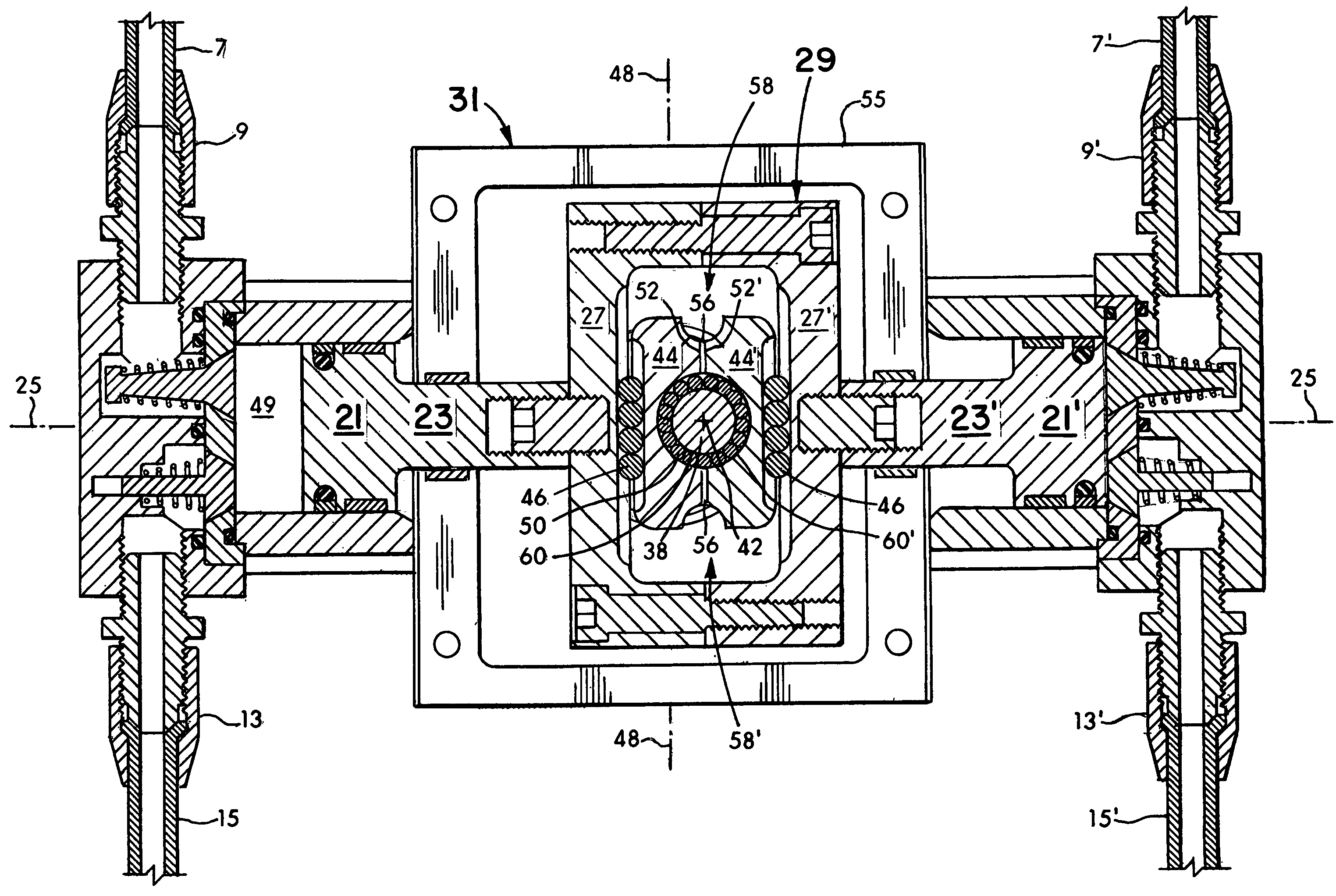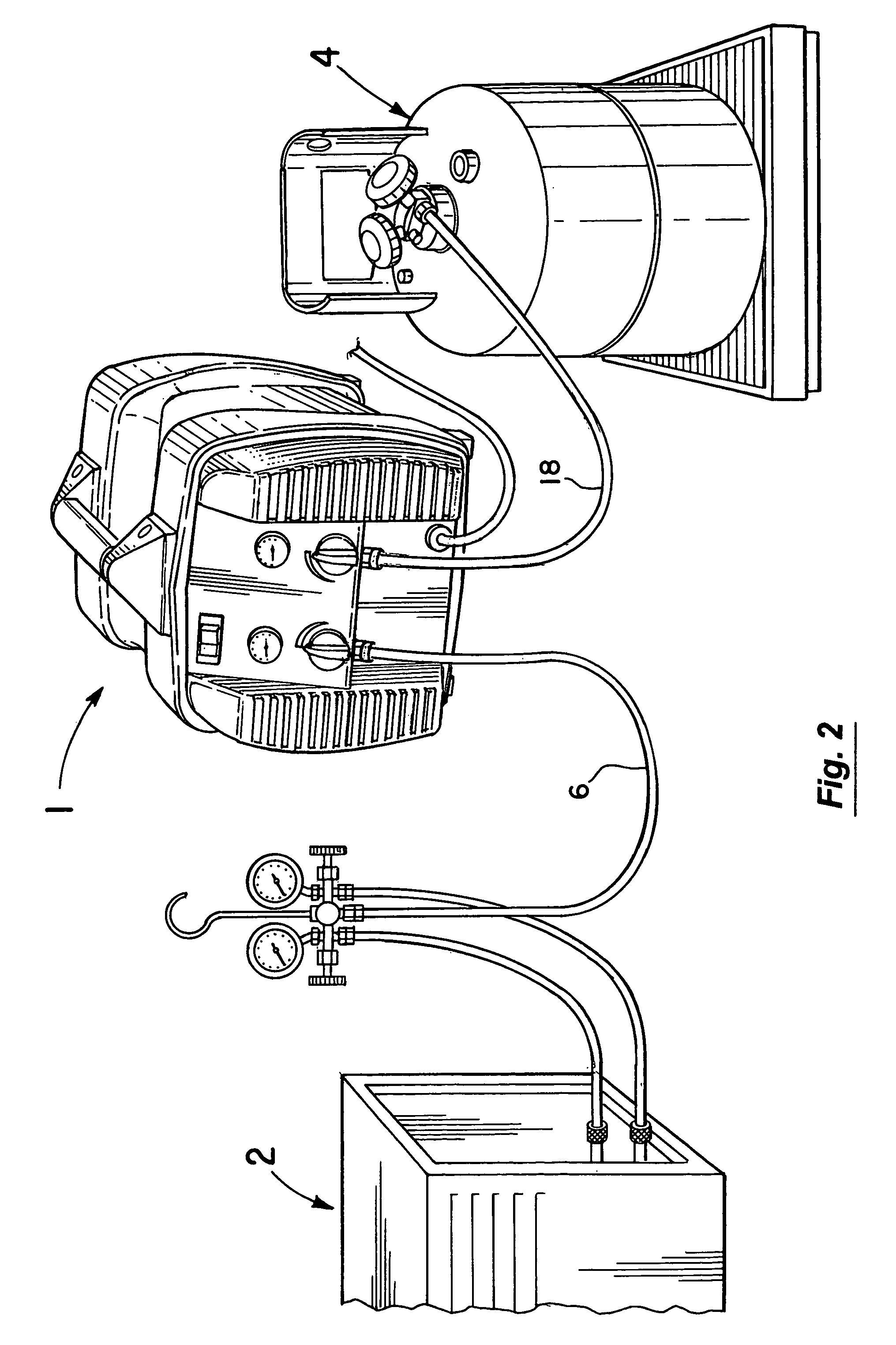Portable, refrigerant recovery unit
a refrigerant recovery and portable technology, applied in the direction of positive displacement liquid engine, piston pump, gearing, etc., can solve the problems of exposing the underside of the piston head to the refrigerant, damage and wear of the components of the unit, and avoiding any exposure to contaminants
- Summary
- Abstract
- Description
- Claims
- Application Information
AI Technical Summary
Benefits of technology
Problems solved by technology
Method used
Image
Examples
Embodiment Construction
FIG. 1 illustrates the portable, refrigerant recovery unit 1 of the present invention. In a typical operating arrangement as shown in FIG. 2, the unit 1 is used to transfer refrigerant from the refrigeration system 2 to the storage tank 4. This basic operating arrangement is schematically illustrated in FIG. 3. In it, refrigerant from the recovery system 2 of FIG. 2 is being delivered through the line 6 (FIGS. 2 and 3) to the incoming lines 7, 7′ of the recovery unit 1 (FIG. 3). The lines 7,7′ as illustrated are respectively connected to the inlets 9, 9′ of the compressor 11 of the recovery unit 1. From the compressor 11 in FIG. 3, the refrigerant is passed through outlets 13,13′ to the lines 15,15′ on which condensers 17,17′ are mounted and then through line 18 to the storage tank 4 of FIG. 2.
The compressor 11 of the recovery unit 1 as best seen in FIG. 4 has opposing piston heads 21,21′ respectively rigidly attached to piston rods 23,23′. The piston rods 23,23′ in turn extend alon...
PUM
 Login to View More
Login to View More Abstract
Description
Claims
Application Information
 Login to View More
Login to View More - R&D
- Intellectual Property
- Life Sciences
- Materials
- Tech Scout
- Unparalleled Data Quality
- Higher Quality Content
- 60% Fewer Hallucinations
Browse by: Latest US Patents, China's latest patents, Technical Efficacy Thesaurus, Application Domain, Technology Topic, Popular Technical Reports.
© 2025 PatSnap. All rights reserved.Legal|Privacy policy|Modern Slavery Act Transparency Statement|Sitemap|About US| Contact US: help@patsnap.com



